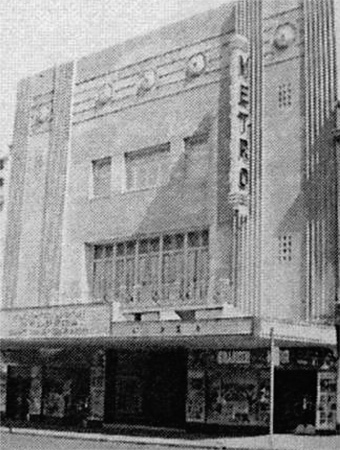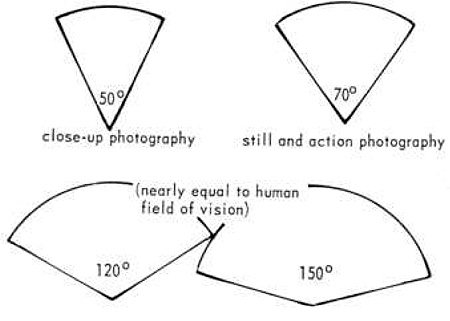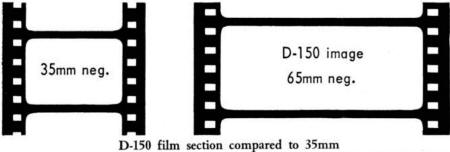Camera 65 and the Metro Bourke Street Bigger than… | Read more at in70mm.com The 70mm Newsletter |
| Written by: Eric White, Melbourne, Australia | Date: 22.05.2010 |
 Back in the late sixties or early seventies, during the run
of "The Shoes Of The Fisherman" in Melbourne, I
remember Graham McGhee, one of the projectionists, telling
me that MGM had planned to put 70mm into their Bourke
Street Metro for "Ben-Hur", but decided that the theatre
would not have been able to install a wide enough screen to
make it worthwhile. Back in the late sixties or early seventies, during the run
of "The Shoes Of The Fisherman" in Melbourne, I
remember Graham McGhee, one of the projectionists, telling
me that MGM had planned to put 70mm into their Bourke
Street Metro for "Ben-Hur", but decided that the theatre
would not have been able to install a wide enough screen to
make it worthwhile."Ben-Hur" was filmed in a process called Camera 65, which was basically 70mm with a slight horizontal 'squeeze', and if projected in this format there would have been a projection aspect ratio of about 2.7:1, much wider than CinemaScope, whose aspect ratio in the late fifties had settled down to about 2.3:1 (Originally it was 2.55:1). I would assume that Metro would have wished to have shown "Ben-Hur" in 70mm at this ultra wide ratio in its hard ticket seasons, and the Bourke St proscenium could just not accommodate it. (Neither could MGM’s St James in Sydney if reports from that city are to be believed). Apart from that, the projection room at Bourke Street was very small. I am not sure that there would have been enough head-room for 70mm machines, with their big 6,000 ft spool boxes. The rewind room was so small that the supply arm of the rewinders had to be mounted unusually high above the bench with the film making a right-angle bend around a roller to allow enough bench space to make splices on. I have seen nothing like that anywhere else. |
More in 70mm reading: The lost world of 70mm Theatres By Ian Hanson A comment to "The lost world of 70mm Theatres" Cinerama At the Plaza The history of some cost- saving approaches to the 70mm experience Internet link: |
 The ultra-wide projection angle made possible with the use
of the
70mm Camera 65 Process. The ultra-wide projection angle made possible with the use
of the
70mm Camera 65 Process.The Bourke Street Metro was a two-gallery theatre, like the Collins Street Athenaeum, and as was the case there, the projection rake was quite steep. I cannot remember if the screen was tilted at all. An ultra-wide screen would have required some sort of a curve, which would have produced the sort of distortion that the picture had at the Greater Union’s Chelsea Cinema in Flinders Street. Horizons and credits buckled upwards towards the sides of the screen. It is reputed that the CinemaScope prints of "Ben-Hur" had a slight frame-line because of the wide aspect-ratio used in shooting, and it is likely that the height of the screen was actually reduced a fraction, so the picture would have been about 2.5:1. If you look at the DVD, it is taken off a Scope print and the "letterboxing" is more severe than normal. I am not sure to what extent "Ben-Hur" was shown with the squeezed 70mm prints overseas. I believe that some American first-run engagements would have been presented in this way, but even in 1959 70mm theatres were not all that thick on the ground and those that existed would mainly have been showing "Around The World In 80 Days" and "South Pacific", with perhaps a bit of "Sleeping Beauty" thrown in. Philips were only producing about 50 pairs of 70mm machines a year and Cinemeccanica was only just starting production. Of course, there were also Simplex and Century 70mm machines coming into production. But it could not be taken for granted that every big American city would have a 70mm house. So I cannot say to what extent "Ben-Hur" was originally shown in 70mm. |
|
 In the late 1960s there was a revival of "Ben-Hur" at the
Chelsea in Melbourne and this was an unsqueezed 70mm
print with an aspect ratio of about 2.2:1. It may well be the
same print that is screened at St. Kilda’s Astor Theatre from
time to time (usually at Christmas and Easter). As the aspect
ratio is narrower than that used during filming, the sides of
the picture get cut off. For most of the time this does not
matter, but in a couple of shots it is noticeable. The DVD
shows everything however. In the late 1960s there was a revival of "Ben-Hur" at the
Chelsea in Melbourne and this was an unsqueezed 70mm
print with an aspect ratio of about 2.2:1. It may well be the
same print that is screened at St. Kilda’s Astor Theatre from
time to time (usually at Christmas and Easter). As the aspect
ratio is narrower than that used during filming, the sides of
the picture get cut off. For most of the time this does not
matter, but in a couple of shots it is noticeable. The DVD
shows everything however.If you wish to see "Ben-Hur" in its 70mm splendor, a visit to the Astor is well worth the trip. The print is still in very good condition, with the colour intact. Photographs: Diagrams and artwork from the collections of Ross King & Kevin Adams |
|
| Go: back - top - back issues - news index Updated 22-01-25 |
